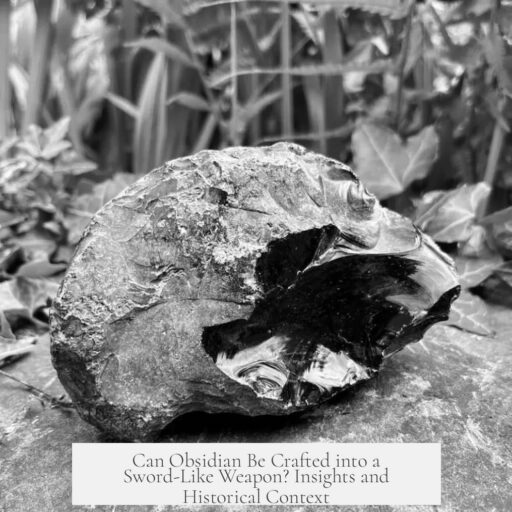Obsidian cannot be practically turned into a traditional sword-like weapon by melting and casting due to its brittle nature and casting challenges. However, Mesoamerican cultures crafted effective sword-like weapons by embedding sharp obsidian blades on wooden cores, resulting in the macuahuitl, a hybrid weapon optimized for slashing and combat use.
Obsidian forms naturally as volcanic glass when molten lava cools rapidly. While it can be melted and cast back to a liquid state, this process is inefficient and impractical for weapon-making. Melting obsidian wastes both material and effort with no added benefit, and the result would retain the material’s inherent brittleness.
Obsidian is known for its sharpness and hardness but is very brittle. Any long, thin blade made solely from obsidian would quickly break or shatter under the stress of combat. Small knives or cutting tools made by flaking obsidian have been found in archaeological contexts worldwide, but these are generally small pieces, not full swords.
The traditional method of crafting obsidian blades did not rely on melting but instead on knapping, a controlled flaking technique. This approach produces microblades and prismatic blades with razor-sharp edges by striking flakes off a core stone. The microblades are small and thin; prismatic blades can be larger, shaped like long trapezoids with sharp, parallel edges.
Across regions rich in obsidian deposits, notably in Central Mexico, communities perfected the art of blade production. There, obsidian was abundant due to volcanic activity, enabling large-scale production of cutting implements.
The most famous obsidian-based weapon is the macuahuitl, used by Mesoamerican civilizations such as the Aztecs. The macuahuitl resembles a wooden sword, roughly the size and shape of a cricket bat. Its core is a hardwood shaft with resin-filled grooves, into which prismatic obsidian blades were set. This composite construction provided structural support and prevented the obsidian from fracturing easily.
While the blades remained brittle, the macuahuitl was an effective slashing weapon. Historical Spanish accounts report devastating injuries inflicted by these weapons, including severed limbs and fatal wounds. When a blade broke, obsidian fragments could lodge in opponents’ bodies, continuing to cause damage. The weapon’s design favored slashing over stabbing or blunt force strikes to decrease breakage and maximize its lethality.
| Aspect | Details |
|---|---|
| Material | Obsidian glass, sharp but brittle |
| Blade Creation | Knapping techniques; flaking microblades and prismatic blades |
| Weapon Structure | Wooden haft with attached obsidian blades |
| Combat Use | Effective slashing weapon with lethal sharpness |
| Limitations | Blades prone to chipping and breaking; mitigated by design |
The production of obsidian blades was often state-controlled. Sites like Sierra de las Navajas supplied raw obsidian. The city-state Xochicalco innovated base preparations for easier blade flaking, enabling mass production. This technological loop boosted military capacity and domestic tool use simultaneously.
Obsidian-based weaponry was not primitive or static but evolved with innovations in manufacturing and battlefield tactics across centuries. Contrary to popular myth, obsidian swords did not exist as single solid blades formed by casting. Instead, the macuahuitl represents the pinnacle of obsidian weapon technology: a composite, razor-sharp, sword-like tool suited for its material’s properties.
Obsidian’s brittleness limits its use as a standalone sword blade. Composite weapons like the macuahuitl offered a practical solution, pairing obsidian’s edge quality with supportive wooden handles for real combat effectiveness.
- Obsidian cannot be melted and cast effectively into swords.
- Long, pure obsidian blades break easily due to brittleness.
- Traditional blades are flaked (knapped) into sharp prismatic shapes.
- The macuahuitl combined wood and obsidian blades for a sword-like weapon.
- These weapons were highly effective despite blade fragility.
- Obsidian weapon manufacture often involved large-scale, state-supported efforts.
- Obsidian swords as single cast blades are modern myths with no historical basis.
Can Obsidian Be Turned Into a Sword-Like Weapon?
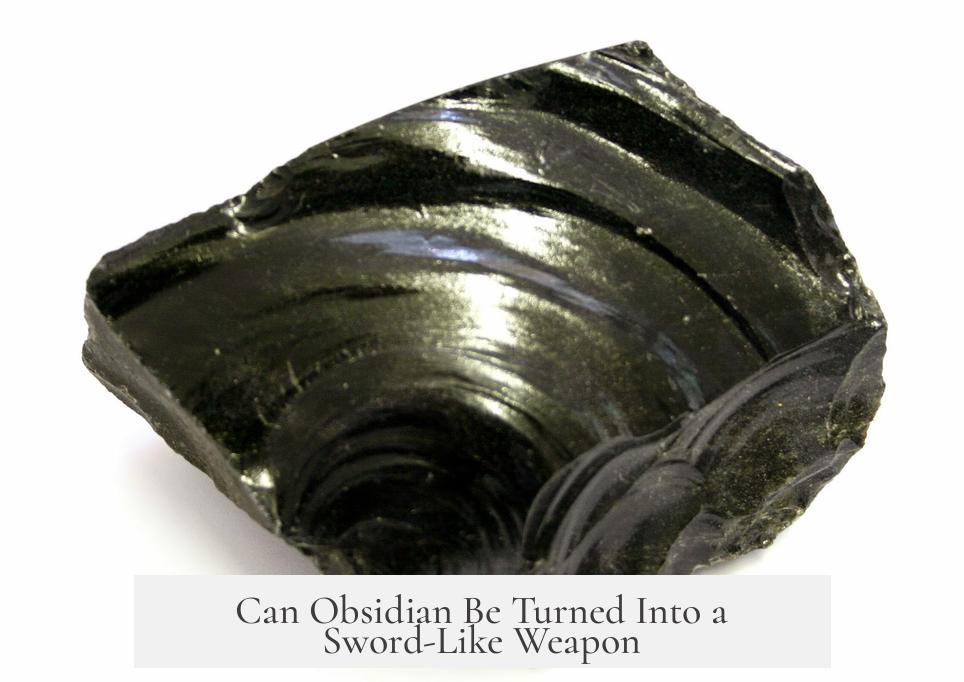
Yes, obsidian can be fashioned into sword-like weapons, but not as a single solid blade like modern metal swords. Instead, Mesoamerican cultures ingeniously created sharp-edged weapons by attaching fragile but razor-sharp obsidian blades to wooden handles. This clever workaround tackled obsidian’s natural brittleness while taking advantage of its staggering sharpness.
Now that’s out of the way, let’s unpack how this volcanic glass—born from fiery lava—became a deadly weapon despite its quirks.
The Science and Myth of Melting Obsidian
Obsidian starts life molten—think molten lava—but don’t expect blacksmiths from the Stone Age to have had an obsidian forge. Yes, obsidian can be melted and cast into shapes, but it’s a wild and inefficient process. Melting obsidian only wastes precious material and energy without offering any practical benefit.
So, forget the fantasy of a perfectly forged obsidian sword a la your favorite anime or YouTube gearhead. That’s modern fiction rather than ancient reality.
Obsidian’s Glasslike Nature: Sharp but Brittle
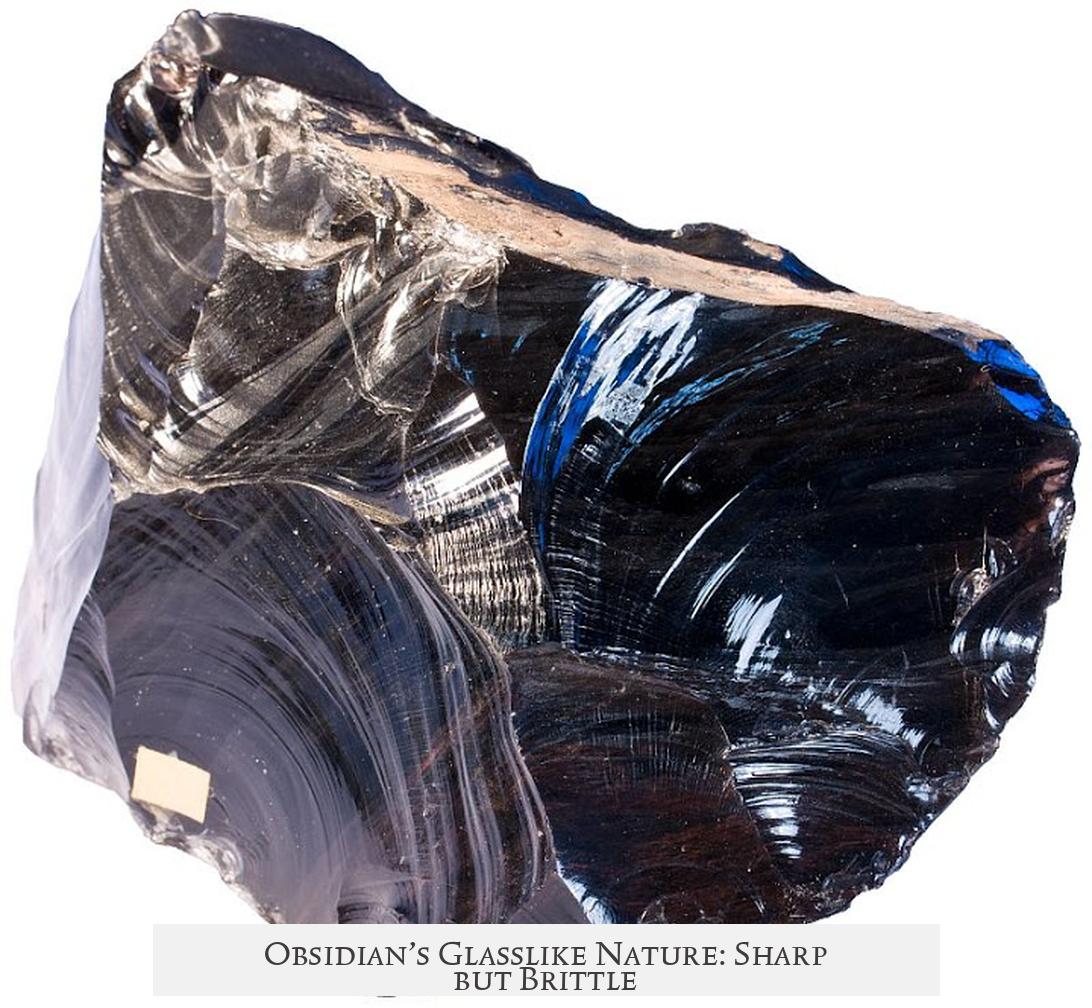
What’s special about obsidian? It’s a natural volcanic glass with the extraordinary ability to produce edges sharper than surgical steel. Ancient humans noticed this quickly.
On the flip side, obsidian is very brittle. This means it’s prone to snapping and shattering under pressure—especially if fashioned into a long, thin blade. Imagine handling a sword that could shatter like dropped glassware mid-fight—not ideal!
Small obsidian knives were practical. Long blades? Not so much. They’d break way too soon.
How Ancient People Worked Around Obsidian’s Limits
Ancient cultures, especially in Central Mexico, didn’t try to cast obsidian blades. They mastered flaking—chipping thin, razor-sharp blades from a core stone (microblades and prismatic blades). These flakes could be used plain or attached to handles.
This method avoided melting and used obsidian’s natural sharpness while sidestepping the brittleness problem of casting large, fragile blades.
The Macuahuitl: Obsidian’s Answer to the Sword
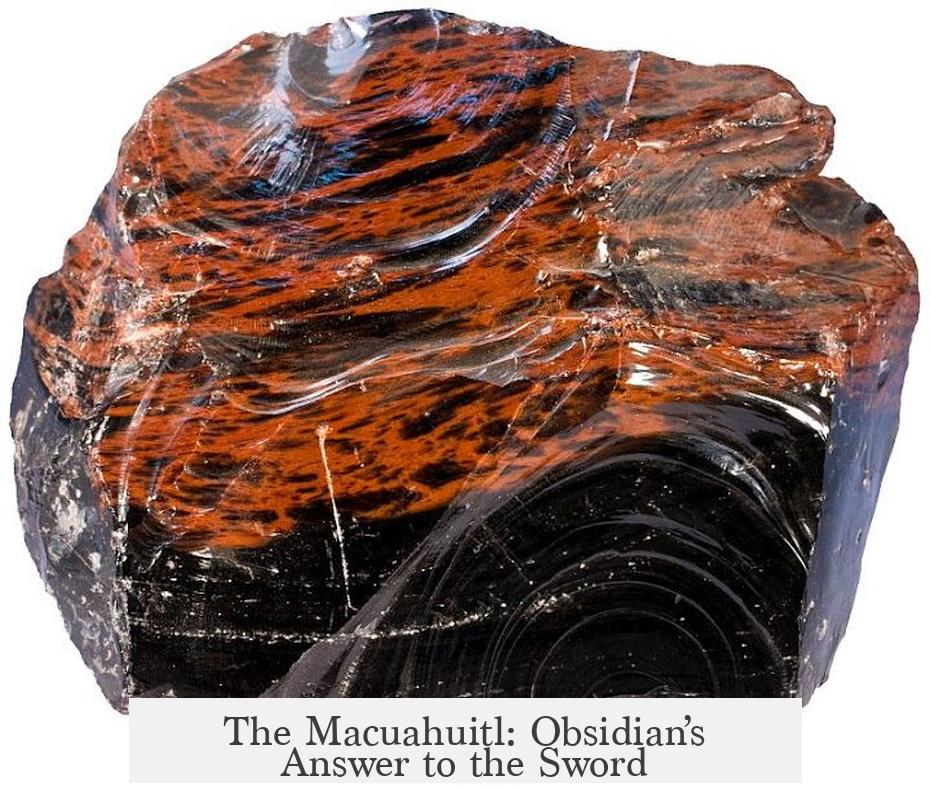
Enter the macuahuitl. This weapon is a hybrid of a sword and a club, combining a sturdy wooden frame with obsidian blades.
- The core of the macuahuitl was a wooden shaft, often made from tough encino oak.
- Grooves on the sides held long prismatic obsidian blades attached with resin.
- The blade edges weren’t a single obsidian piece but many smaller shards lined up, making replacement easier and limiting damage impact.
Invented no earlier than around 900 CE in Postclassic Mesoamerica, the macuahuitl brilliantly exploited obsidian’s strengths while managing its weaknesses.
How Effective Was the Macuahuitl?
Despite obsidian’s brittleness, macuahuitl warriors could deliver devastating blows.
- Spanish conquistadors reported incidents of horses severed with a single strike.
- The obsidian blades were so sharp they could cleave enemies almost in two.
- Even when blades shattered, sharp fragments often lodged in wounds, continuing to do damage.
However, the weapon was designed primarily for slashing, not blunt force. Using it like a hammer could break the blades too quickly.
The Bigger Picture: Obsidian’s Industrial Backing
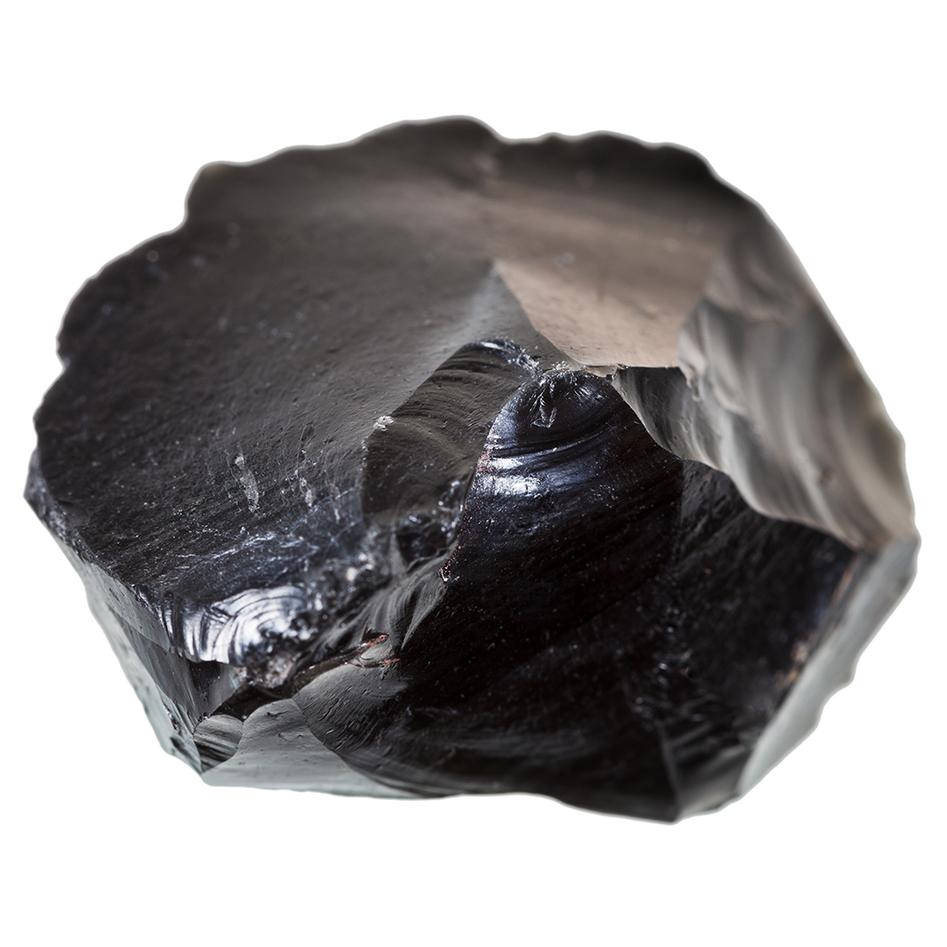
Obsidian wasn’t just a craft-hobby material. It had state-level importance. Postclassic Mesoamerican states ensured steady supply lines for obsidian, especially from sources like Sierra de las Navajas near Pachuca.
Centralizing obsidian procurement allowed mass production of prismatic blades and weapons like the macuahuitl, fueling both warfare and daily life.
The city-state Xochicalco innovated processing techniques that made blade production more efficient and consistent, churning out standard cores for reliable flaking—a step toward proto-assembly line production of stone tools.
A Feedback Loop: Military Innovation and Obsidian Production
As the macuahuitl grew in popularity, demand for obsidian blades soared. This in turn pushed states to improve supply, processing, and manufacturing. A classic feedback loop of innovation, demand, and state power.
Takeaways: Obsidian vs. Metal Swords
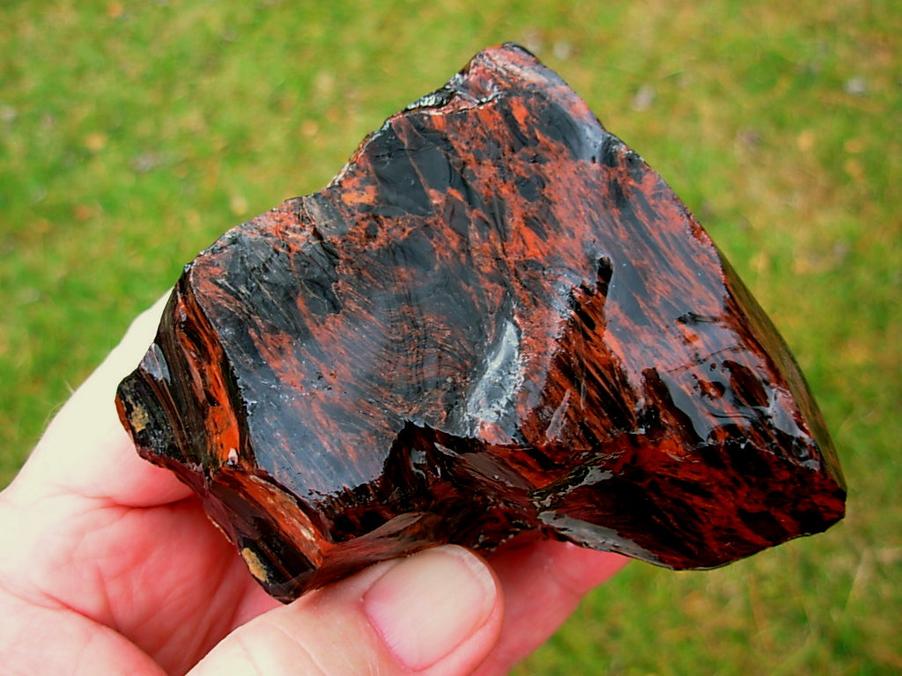
Before metal swords dominated warfields, obsidian weapons like the macuahuitl produced razor-sharp edges unmatched at the time. But they also came with a catch—obsidian’s brittleness limited blade length and durability.
So, could obsidian be turned into a sword-like weapon? Absolutely—but with caveats. You can’t just melt and shape obsidian into a long sword. Instead, ancient Mesoamericans created composite weapons using wooden bases and obsidian blades, balancing sharpness with fragility.
They developed prismatic blade technology to mass-produce these blades. It was a sophisticated system—not primitive at all.
Putting It All Together
The story of obsidian swords shows human ingenuity adapting materials to their limits.
- Obsidian is sharper than steel but breaks easily.
- Melting and casting obsidian swords is a modern myth.
- Flaked obsidian blades attached to wood formed the lethal macuahuitl.
- The design optimized sharpness, combat effectiveness, and blade replacement.
- Industrial-scale obsidian production backed state military power.
Next time a YouTube video claims molten obsidian swords, remember: sometimes ancient tech is smarter than flashy cinema. Knowledge of obsidian’s real properties proves that ancient Mesoamericans won battles not with fantasy blades, but with practical, razor-sharp innovation.
Curious Where Obsidian Fits Now?
Today, obsidian blades are sometimes used in surgical scalpels—exploiting that glasslike edge for incredibly precise cuts. So, the ancient love for obsidian sharpness lives on, just in a more modern context.
Obsidian swords may be fantasy, but obsidian-edged tools remain a perfect example of smart, resourceful design shaped by material reality.
Final Food for Thought
What if high-tech metallurgy had been unavailable? Would human creativity find new ways to maximize other natural materials, just like obsidian? Ancient Mesoamericans boldly said yes.
In the end, obsidian swords aren’t about smashing steel together—it’s about adapting to your tools’ strengths, knowing their flaws, and winning your battles with brains and not brute force alone.
Can obsidian be melted and cast into a sword-like blade?
Obsidian can be melted since it starts as molten lava. However, casting it into a sword would waste time and materials. The process is not practical for weapon-making.
Why is obsidian unsuitable for making traditional swords?
Obsidian is brittle despite its hardness. Long swords made entirely from obsidian would snap quickly when used, making them fragile and unreliable in combat.
How did ancient cultures create obsidian weapons resembling swords?
They used flaking techniques to produce sharp prismatic blades. These blades were attached to wooden handles to form weapons like the macuahuitl, which was more a bladed club than a true sword.
What made the macuahuitl effective despite being made with brittle obsidian blades?
The macuahuitl’s blades were razor-sharp. Though they could shatter, the weapon was used mainly for slashing, reducing breakage. Fragments could embed in wounds, still causing damage after blade breaks.
Was obsidian weapon production ever done on a large scale?
Yes. Postclassic Mesoamerican states invested in obsidian supply and processing. Sites like Sierra de las Navajas produced large quantities of blades efficiently for military use.
